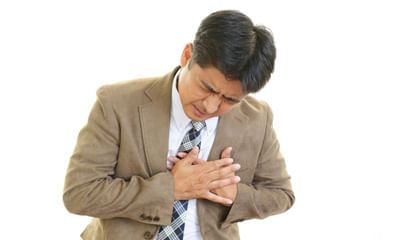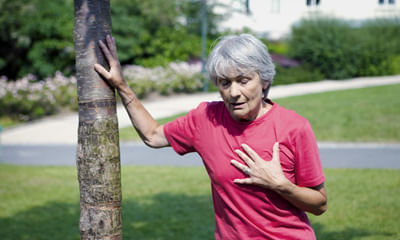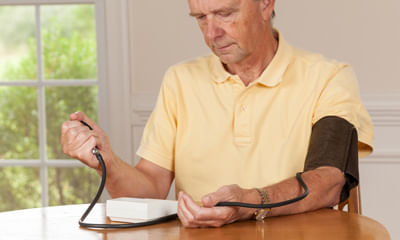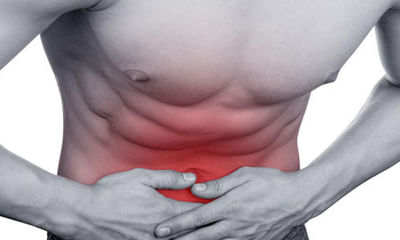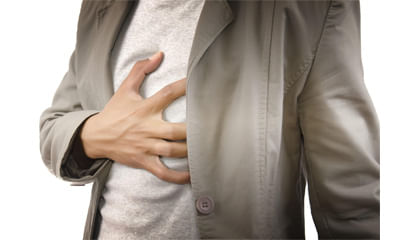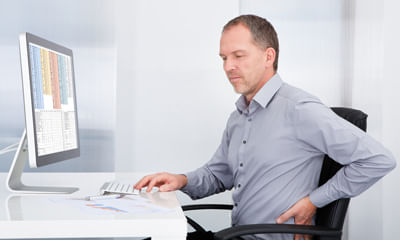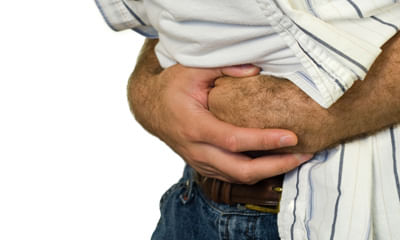Chest Pain After Eating Food
Female age: 18 height: 5’7 weight: 65-67 kg on 26 june 2022 I threw up blood for the first time (fresh blood and just co ...
Ask Free Question
Homeopathy has very effective and reliable treatment for your problem. No side effects. Please take homeopathic medicine, preliminary dose, ipecac 30-once daily in the evening for 3 days. Book online appointment/consultation with me -(commencing from text consult rs 149, audio/ phone-rs 300) for further more comprehensive prescription and treatment.
I am suffering from chest pain in the middle for past one month, I have gone through multiple eggs, 2d echo, endoscopy, ...
Ask Free Question
1.no alcohol 2. Reduce body weight if over wt3. No smoking/ tobacco/drugs/ avoid pollution 4. Diet - no ghee/ butter, have mix of vegetable oils - mustard, til, ground nut, olive oil, have more green vegetables and fruits, have whole grain atta, no fried. Fast. Spicy / processed/ junk food. Less sugar, potato, rice. Less salt. 5. 30 mts brisk walk daily 6. Deep breathing exercise for 10 mts daily 7. Meditation daily for 10 mts. 6-8 hrs of sleep at night 8. Expose your body to sun for 15-20 mts daily after some oil massage to get vit d. 9. Take more water 10 maintain oral hygiene medicine can not be advised for open question ,for medicine and further advise contact on private consults good luck.
Hello i'm b mukherjee. Age 29 yrs. I've esophagus motility disorder. I felt severe pain and burning sensation left side ...
Ask Free Question
I understand the complexity of your symptoms associated with esophagus motility disorder and functional heartburn. It's crucial to approach your condition comprehensively, considering your desire for pregnancy, here are few things to consider: medication management: esomeprazole 40 mg / esogress is a proton pump inhibitor (ppi) used to manage acid reflux. Its efficacy can vary among individuals. It's vital to adhere to the prescribed dosage and discuss any recurring symptoms with your healthcare provider. Lifestyle modifications: implement lifestyle changes to minimize acid reflux triggers. This includes avoiding large meals, acidic or spicy foods, and lying down after eating. Elevating the head of your bed can assist in reducing nighttime reflux. Dietary adjustments: collaborate with a dietitian to identify specific trigger foods and customize your diet accordingly. This can significantly impact the frequency and intensity of acid reflux and associated symptoms. Continuous monitoring: maintain a detailed symptom diary to track patterns, triggers, and medication effectiveness. Regularly share this information with your healthcare provider for informed decision-making. Pregnancy planning: it's commendable that you're considering pregnancy. Discuss your plans with your obs/gynaec doctor to explore acid reflux management strategies that are safe during pregnancy. They may recommend alternative medications or lifestyle modifications. Nasal and throat symptoms: mucus accumulation in the throat and nose can be associated with acid reflux. Ensuring proper acid suppression is crucial. Additionally, consider nasal saline irrigation to alleviate nasal congestion and mucus buildup. Ear, nose, and throat (ent) assessment: given the pressure and symptoms in your throat, nose, and ear, consider consulting an ent specialist for a comprehensive evaluation. They can assess for any structural or inflammatory issues contributing to your symptoms. Alternative medications or therapies: if esomeprazole alone is insufficient, your healthcare provider may explore alternative medications or therapies. This could include combining medications or trying different acid-suppressing drugs. Remember, managing acid reflux is a nuanced process, and individual responses to treatments vary. Regular follow-ups with your healthcare provider are essential to assess progress and adjust your treatment plan accordingly. If you have specific concerns or require further tailored advice, feel free to initiate a private consultation. Your well-being is paramount, and i'm here to support you on your health journey.
Hi, I am taking high bp medicines from last dec when my bp was 150/110. I reduced my weight by 20 kg and eating normal f ...
Ask Free Question
Firstly, congratulations on the significant weight loss and the improvement in your blood pressure control. It's excellent that your blood pressure is within a healthier range. The pain you describe in the left hand near the elbow and in the shoulder, especially during brisk walking, could be due to various reasons. However, it's essential to take any chest pain or discomfort seriously and consult with your healthcare provider promptly. Given that you've experienced this pain during physical activity and you have a history of high blood pressure, it's crucial to rule out any cardiovascular concerns. Your normal echocardiogram is a positive indicator, but the pain you describe should be evaluated further. Here are a few considerations: 1. Musculoskeletal causes: pain in the left arm and shoulder could be musculoskeletal in nature, related to strain or overuse during exercise. 2. Cardiovascular causes: while your echo is normal, it's still important to consider other cardiovascular factors. Pain in the left arm can sometimes be associated with reduced blood flow. 3. Nerve impingement: nerve impingement or compression can also cause pain in the arm and shoulder. Since your symptoms have a potential cardiovascular connection, it's advisable to consult with your healthcare provider. They may recommend further cardiovascular evaluations, such as a stress test or additional imaging, to assess the heart's response to exercise. Don't ignore any unusual symptoms, especially during physical activity. It's better to be cautious and have a healthcare professional evaluate your situation. Consider scheduling a private text consult within the app to discuss your symptoms in more detail and receive personalized advice based on your health history.
I had done my whole body tests and they looks good except some minor. But as I was having some pain in my stomach and ac ...
Ask Free Question
Usual duration is 7-10 but continue hp kit for full 14 days take small frequent meals avoid oily deep fried and spicy meals drink 3-4litres of water a day avoid raw vegetables and salad for few weeks.
Sir I am 16 years old, when I eat at night before the sleep and get chest tightness and feeling unwell and not able to s ...
Ask Free Question
1.no alcohol3. No smoking/ tobacco/drugs/ avoid pollution 4. Diet - no ghee/ butter, have mix of vegetable oils - mustard, til, ground nut, olive oil, have more green vegetables and fruits, have whole grain atta, no fried. Fast. Spicy / processed/ junk food. Less sugar, potato, rice. Less salt. 5. 30 mts brisk walk daily 6. Deep breathing exercise for 10 mts daily 7. Meditation daily for 10 mts. 6-8 hrs of sleep at night 8. Expose your body to sun for 15-20 mts daily after some oil massage to get vit d. 9. Take more water 10 maintain oral hygiene medicine can not be advised for open question ,for medicine and further advise contact on private consults good luck.
Sir I am harsha and I am 22 years old. My ecg, 2d echo and lipid profile test and also chest xray were normal I have bee ...
Ask Free Question
U have to improve your food habits do 1. Take 2/ 3glass of warm water in the morning before brush 2. Take more water in day 3. Take meals at fixed hrs, chew food properly/ completely, no eating quickly 4. Take small amount of food at a time, take more frequent meals - may be five times a day. 5. No spicy/ fried/ fast/ junk/processed food. Caffeine, 6. No smoking, chewing gum, and carbonated beverages. 6. No milk for few days, can take curd, no uncooked salad 7. Avoid constipation 8. Use nibupani (lemon water) 2/ 3 times a day 9. Do not drink/ store water in plastic bottles. 10 .relax and walk for 30 mts daily 11. Take enough rest- do not lie down immediately after eating. Take dinner 3 hrs before sleeping. No late nights 11. Keep your weight under control. 13. Avoid tea, coffee, alcohol 15. Reduce physical and mental stress. Maintain healthy life style. Do exercise regularly. 16. No unnecessary medicines medicine can not be advised for open question for medicine and further advise contact on private consultation good luck.
Mere papa ko back pain ho rha hai acidity ya kuch aur nhi pata ek baar doctor se consult karke laye the acid problem keh ...
Ask Free Question
Back pain exercises; kindly do these exercises. Back pain is described as acute or chronic based on how long you’ve had it. Acute pain lasts days to weeks, subacute pain lasts six weeks to three months, and chronic pain lasts longer than three months. Things that make it better or worse back pain may get worse with movement or if you sit or stand for a long time. It may get better if you switch positions or walk around. Other symptoms you may experience with back pain include: •the painful spot looking swollen and feeling tender to the touch •a muscle spasm in the painful area •numbness or weakness in one or both of your legs (if the pain is due to a nerve issue) if you find you have back pain and can’t hold your urine or bowel movements, something is pressing on your spinal nerves, and you should be evaluated immediately. This condition, called cauda equina syndrome, can cause severe long-term damage to your spinal nerves if not treated right away. 6 imbalances that cause pain—and how to fix them "pain is a medical condition and a medical issue, says brett jones, owner of applied strength in pittsburgh who is certified for the functional movement screen, a system of tests and cor rective exercise strategies. "it's a warning sign. The pain is there to tell you something's wrong. And that warning sign could be more serious than "you're going too hard. Jones and the other coaches consulted for this piece all had a horror story to tell-when pain in a client meant a more serious condition such as a nerve issue, thyroid issue, or even cancer. The point: if you experience regular pain while exercising-or when you're not-go to the doctor. If you've been cleared by a doc and you're still feeling discomfort, try these simple tests to see what's truly causing the pain-it could be related to an imbalance in a completely different part of your body. The good news: with these drills, stretches, and corrective exercises, you may be able to fix them-no doctors necessary. 1. Standing extension how it helps – this standing extension helps reverse what you do on a daily basis (hunching)… since most bulging discs and herniated discs are caused by poor posture and repeated flexion of the spine (esp bending fwd in bad posture), this stretch helps push the disc back to neutral position. How to do it – begin this exercise by standing up with good posture. Now take both hands and place them on both sides of your lower back. Now with the help of your hands push your pelvis forward and extend your spine back. Follow the extension with your neck so that you end up facing the ceiling. – start with 10 repetitions and do 2-3 sets. – this one is particularly great to do when you need a break from sitting at your desk. ** this should not cause any pain. If you feel pain during it is not a good one for you. In that case, stop and try some of the other exercises below instead. 2. Half cobra pose (prone lumbar extension) how it helps – the half cobra stretch helps to push the disc material back towards the center of the inter-vertebral disc to allow for improved healing. The goal of repeated lower back extension is the “centralization of symptoms”, which basically means pain that travels down the affected leg to the foot should come back up closer to the low back – which will in turn alleviate the pain. How to do it – begin this exercise by lying on your stomach (prone position) and slowly prop yourself up on your elbows while keeping your hips in contact with the floor. – hold the prop-up position for 10-15 seconds before returning to the prone position (lying face down). – gradually increase to holding the end position for 30 seconds. Aim for 10 repetitions of this stretch. ** initially, you may not be able to tolerate this position very well, so make sure you start slowly and carefully. If there’s any pain, try a different exercise instead. 3. Full cobra pose (advanced extension) how it helps – this stretch is based on the same principle as the half cobra pose above. This advanced extension helps to push disc material back towards the center of the intervertebral disc, with the goal of alleviating pain symptoms. How to do it – once you’ve mastered the half cobra pose, you can increase the difficulty by moving to the advanced version of this stretch. Begin this exercise by lying on your stomach in the prone position (lying facing down) and slowly press up on your hands while keeping your pelvis in contact with the floor and lower back relaxed. – hold the prop-up position for 10 seconds. Aim for 10 repetitions of this stretch. – eventually try to hold this pose for longer if it feels good (20-30 seconds). ** if you feel pain during this exercise, it is not a good one for you. In that case, stop and try some of the other exercises instead. 4. Cat-cow how it helps – this is one of the most popular herniated disc exercises. By combining two yoga poses, the cat-cow stretch can help to relieve pressure on the herniated disc by opening the intervertebral disc space. It also improves mobility of the spine, which may help to relieve disc herniation pain and speed recovery. How to do it – begin this stretch on your hands and knees. Inhale and let your stomach “drop” towards the floor as you look up towards the ceiling. – follow this by exhaling and slowly rounding your spine while pressing into the floor with your hands and slightly curving your neck to look at your feet. – aim for 10 repetitions of this stretch and do 2-3 sets. How it helps – this exercise will help strengthen and stabilize your lower back and deep spine muscles. This will help you to maintain a good posture and avoid future episodes of herniated discs. How to do it: – begin on your hands and knees with your hands positioned under your shoulders and knees positioned under your hips. – raise your left arm and reach it forwards until it is aligned with your torso; at the same time, kick your right leg backwards until is it aligned with your torso. – hold this position for 2-3 seconds before slowly returning to the starting position. – repeat with your right arm and left leg. – alternate sides for 10 repetitions and do 2-3 sets. ** ensure that your head, neck, and back maintain a neutral alignment to minimize stress on your neck. 5.plank: how it helps – just like the bird dog, this “core” exercise will help bring your pelvis into right position by strengthening the deep spinal muscles and glutes (butt muscles). How to do it – begin lying on your stomach with your forearms against the mat. – engage your core and lift your body so that you are resting on your forearms and toes. – start with 10 second holds and work up to 30 second holds, do 2-3 sets. ** ensure to keep your back straight throughout the entire exercise – spine in neutral position. Thoracic expansion if you’re using a chair, sit facing forward and allow your upper body to fall over the back of the chair. Extend your arms above your head for a deeper stretch. Hold either position for 10 seconds. 1. Plank the world record for the longest plank is 8 hours. Luckily, you don’t need to hold it that long for the exercise to have an effect! in fact. You can hold it for 10-15 seconds. • the plank is similar to a push-up position, but instead of resting on your hands, you rest on your elbows and bring them directly underneath your chest. • after kneeling, lean forward and place your elbows on the ground directly below your shoulders. • lift your knees off of the floor and push your feet back. Ensure your back is straight and keep your neck aligned with the rest of your spine. • hold the position and tighten your core muscles for the desired time. 2. Side plank just like the original plank, but only balancing on one side. • lie on the floor on your side, facing sideways with your feet together. • lift up your body until you are supporting yourself with your elbow, directly below your shoulder. • raise your hips until your body is in a straight line and tighten your core muscles; your body should create a slant from your shoulders to your feet. • hold this position without dropping your hips. • repeat on the opposite side. 3. Pelvic tilt with exercise ball sit on a ball that allows your legs to be at a 90-degree angle with your feet flat on the floor. • keep your shoulders back and spine straight. • tilt your hips forward and flex your abdominals tight. • tilt your hips backward as you stick your tailbone out. • move back and forth slowly, keeping your shoulders back. • repeat 10 times for 3 sets. 4. Superman lie on your stomach, face down, with your arms out in front of you. • lift arms, legs, and chest off the floor simultaneously while keeping your hips grounded. • hold for a minimum of two seconds. • lower back down slowly. • repeat 10 times for 3 sets. 6. Crunches lie flat on your back, placing your feet flat on the floor with your legs bent. • fold your arms across your chest and lift your torso up until your head, neck, and torso are off the ground. • hold for a moment before lowering back down. • repeat. 6. Quadruped arm opposite leg raises • kneel on the floor, lean forward, and place your hands palm-down on the floor. • make sure your back is straight, your knees are below your hips, and that your palms are directly below your shoulders. • raise one arm as you raise the opposite leg until both are aligned straight out from your body, parallel to your spine.
My grandmother is 70+ years old. She has poor appetite. We force her to eat but she says I want to but bilkul bhuk nahi ...
Ask Free Question
Dear user, here is my advice to your grandmother. Please increase direct sunlight exposure. Feed her easy to digest food such as idli, potatoes, banana, mosambi. Give her warm glass of water with ors mixed in the morning. Make walking everyday habit. Use hot gel bottle and apply on pain areas, it will increase blood circulation and give her relief. Give her pudin hara capsule once daily for digestion. I wish her all the best!
Sir/ mam, for last 2 days there is bloating in my stomach. Appetite has also reduces to some extent. Even after eating l ...
Ask Free Question
Please note that if this is a recent findings -- its solely due to heat waves throughout the country. Please take balance diet stay hydrated consume water more often -- in the form of juices and water no chill water no food from outside take nux vom 30 twice daily for next 3 days if this does not helps you -- you will need to do some tests give me a feedback.

